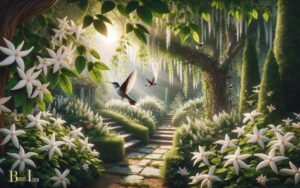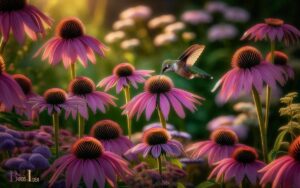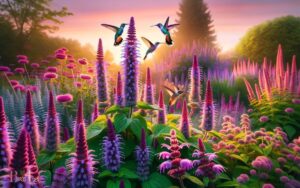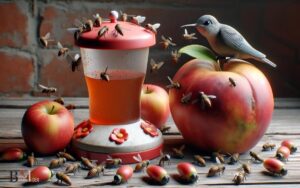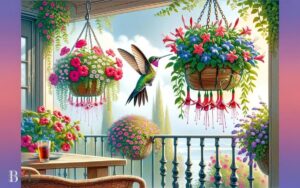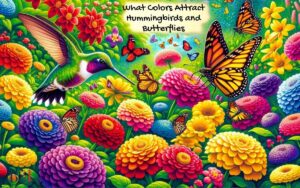Night Blooming Flower That Attracts Hummingbird Moths
The Moonflower (Ipomoea alba) is a night-blooming flower known to attract hummingbird moths with its large white blooms and strong fragrance.
Hummingbird moths, also referred to as Hawk moths or Sphinx moths, are nocturnal pollinators that are drawn to flowers which bloom at night and emit a strong scent.
Night-blooming flowers like the Moonflower are specifically adapted to attract these types of pollinators.
Some key features of the Moonflower that make it appealing to hummingbird moths include:
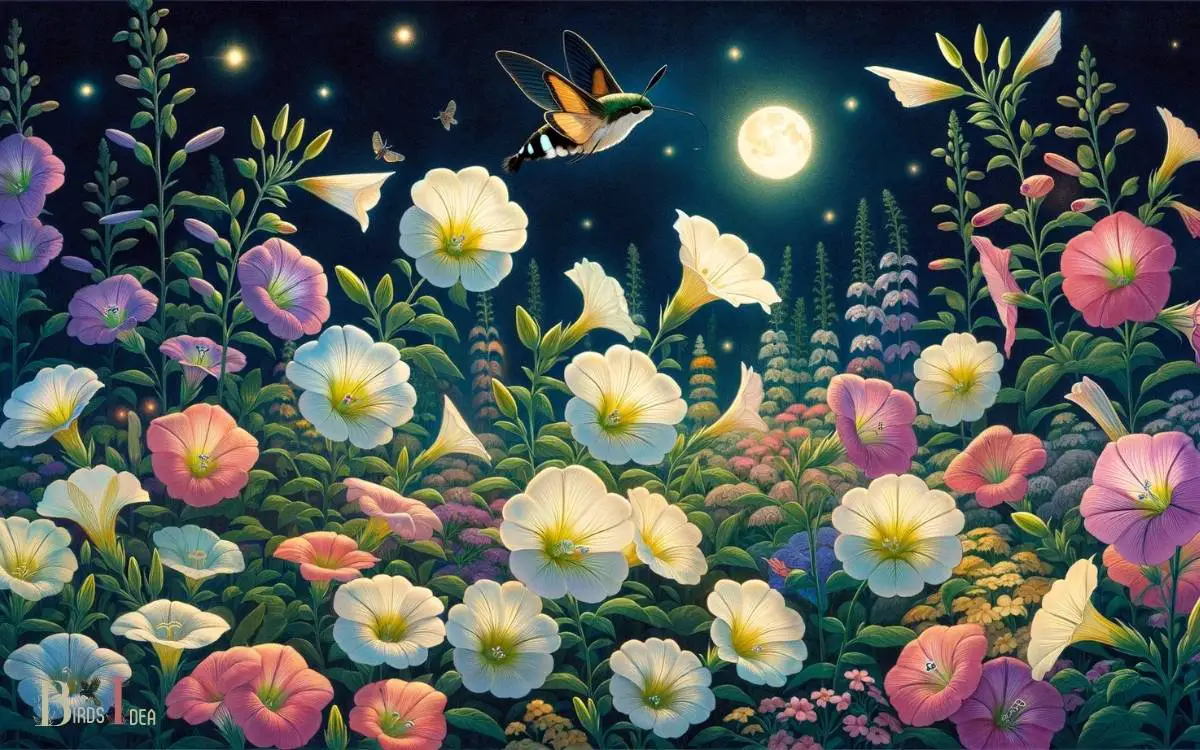
Key Takeaway
Characteristics of Night Blooming Flowers
Night blooming flowers exhibit unique adaptations to attract nocturnal pollinators. These flowers often have a strong, sweet scent that wafts through the night, guiding nocturnal pollinators toward them.
Additionally, their petals are typically white or pale in color, making them more visible in the dim light.
Some night blooming flowers, such as the evening primrose, produce nectar with a higher sugar content, providing a valuable energy source for the night-flying insects like moths and bats.
Furthermore, these flowers often have tubular shapes, which are well-suited for the long proboscises of moths and the beaks of certain nocturnal birds.
These adaptations showcase the ingenious ways in which night blooming flowers have evolved to ensure successful pollination in the darkness, making them a fascinating subject for botanical enthusiasts.
Best Night Blooming Flowers for Hummingbird Moths
One notable characteristic of night blooming flowers that attract hummingbird moths is their tubular shapes, which provide a perfect fit for the long proboscis of these unique pollinators.
When selecting night blooming flowers to attract hummingbird moths, it’s essential to choose varieties that are not only fragrant and visually appealing but also provide ample nectar for these creatures.
The best night blooming flowers for attracting hummingbird moths include:
- Moonflower (Ipomoea alba): This vine produces large, white, fragrant flowers that open in the evening, attracting hummingbird moths with their sweet scent.
- Four O’Clock (Mirabilis jalapa): These colorful flowers open in the late afternoon and continue to bloom into the night, releasing a sweet, pleasant fragrance.
- Nicotiana (Nicotiana sylvestris): With its trumpet-shaped, white flowers that release a strong, sweet fragrance at night, Nicotiana is a favorite of hummingbird moths.
Growing Night Blooming Flowers in Your Garden
When selecting night blooming flowers to attract hummingbird moths, gardeners can choose from a variety of species that are not only visually appealing but also provide ample nectar for these unique pollinators.
To create a captivating night garden, consider incorporating some of these enchanting flowers:
| Flower | Color | Fragrance |
|---|---|---|
| Moonflower | White | Intensely sweet |
| Evening Primrose | Yellow | Mildly fragrant |
| Angel’s Trumpet | Creamy white | Sweet and floral |
These night blooming flowers not only add a touch of magic to your garden but also attract fascinating hummingbird moths with their alluring colors and fragrances.
By carefully selecting and nurturing these flowers, gardeners can create a mesmerizing nighttime oasis that delights both themselves and any visitors to their garden.
Attracting Hummingbird Moths to Your Yard
An effective way to attract hummingbird moths to your yard is by planting nectar-rich and fragrant night blooming flowers.
These flowers not only provide a food source for the moths but also emit a strong, sweet scent that can attract them from a distance.
In addition to planting the right flowers, there are other steps you can take to further entice these fascinating creatures to visit your yard:
- Install a shallow dish with a mixture of overripe fruits and a little bit of water. Hummingbird moths are also attracted to the fermenting fruits.
- Set up a hummingbird feeder filled with a solution of one part sugar to four parts water. This can serve as an additional nectar source for the moths.
- Avoid using pesticides in your yard, as they can be harmful to hummingbird moths and other beneficial insects.
Night Blooming Flower Care and Maintenance
How can one effectively care for and maintain night blooming flowers in order to attract and support hummingbird moths in their yard?
Night blooming flowers require specific care to thrive and attract hummingbird moths. To support these beautiful creatures, it’s important to choose a suitable location with well-draining soil and ample sunlight.
Regular watering is essential, especially during dry spells, to keep the soil consistently moist. Additionally, applying a balanced fertilizer every few weeks can help promote healthy growth and blooming.
Pruning the flowers to remove dead or damaged parts can also encourage new growth and enhance their appearance.
Lastly, staying vigilant for pests and diseases is crucial for maintaining the overall health of the night blooming flowers.
By following these care and maintenance practices, one can create an inviting environment for hummingbird moths to visit and enjoy.
Conclusion
If you want to attract hummingbird moths to your garden, simply plant some night blooming flowers. It’s ironic that these beautiful, fragrant blooms can only be enjoyed at night when most of us are fast asleep.
But hey, at least the moths will appreciate them! So go ahead, add some night blooming flowers to your garden and enjoy the irony of attracting these fascinating creatures while you’re tucked in bed.

